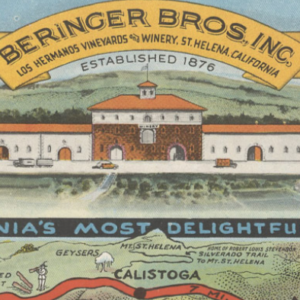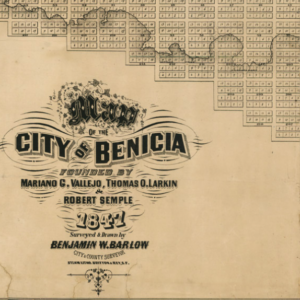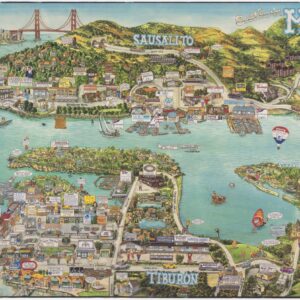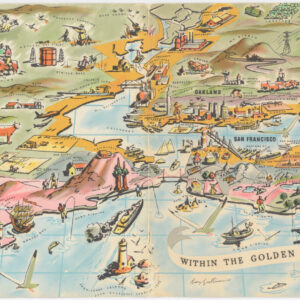Railroad manuscript map with early Petaluma town plan and survey work down to Marin County.
Sonoma & Marin Rail-Road Map, May 1875.
$4,200
In stock
Description
This is an ink manuscript map on drafting linen showing a section of the short-lived Sonoma-Marin Railroad. It stretches from the town of Petaluma in the north to the Marin-Sonoma border in the south.
Much of the depicted area is currently part of the Marin-Sonoma Narrows Project.
Context is everything
The Sonoma & Marin Railroad evolved from the Petaluma & Haystack Railroad, a short-lived and unusual narrow-gauge railway. Charles Minturn – the ‘Ferryboat King’ – built the railroad in 1864 to transport hay from the fields in the Petaluma region to the Petaluma River for shipping to San Francisco. Hay was a valuable commodity at the time and was in high demand for feeding horses and livestock in San Francisco. The narrow-gauge track meant that the distance between the rails was narrower than standard-gauge railroads and was chosen to reduce construction costs and allow the railroad to navigate the agricultural fields more easily.
The railroad was relatively short, extending six miles from the hay fields to Haystack Landing, a steamer dock on the Petaluma River where the hay was loaded onto barges and ships for transport to San Francisco. Despite its initial success, the Petaluma & Haystack Railroad faced financial difficulties.
The Petaluma & Haystack lasted until 23 March 1875, when it was purchased by the Sonoma & Marin Railway Company. The company intended to extend the line down to San Rafael, and our map was presumably drafted for this objective. In 1876 Peter Donahue and the San Francisco & North Pacific Railway took over the project, and the first train to operate from San Rafael to Petaluma ran on 31 August 1878.
Notable features
Some of the map’s interesting and notable features include:
1. A detailed town grid of Petaluma, less than 25 years after it was founded in 1852 as a river town during the California Gold Rush era and just three years after a devastating fire swept through the town in 1872, destroying much of the town’s wooden structures.
2. The rail line terminates in Petaluma at First and B Streets, where Charles Minturn built his depot after his first choice of using the main plaza was rejected.
3. The Petaluma River, called the Petaluma Creek on the map, is carefully delineated, with its distinctive meandering southward course. Two drawbridges span the river off Main Street.
4. The surveyors have plotted the course of the railroad south in the same general direction of the river, traversing through wetlands and fields and passing large properties like Wiswell and Hines.
5. The rail line runs roughly parallel to Old R-Road, which terminates at Haystack Landing, the aforementioned freight and passenger connection point for ships to and from San Pablo Bay.
6. On the left side of the map (south), we see a large natural featrure labeled ‘Neil’s Island.’ This piece of land was once an island surrounded by the wetlands of the Petaluma River.
7. The map contains the seal and signatures of J.G. Wickersham, President; E.L. Lippitt, Secretary, and M.L. Stangroom, Chief Engineer, dated 7 June 1875, certifying this to “be a correct Map of the located centre line of the Sonoma and Marin Company’s Railroad. The land taken and obtained for the use thereof is of such a width, not to exceed one hundred feet on each side of said center line as shall be necessary for the construction of the road.” Docketed in ink, “Filed in Clerk’s Office of Sonoma County this 10 day of June 1875. John F. Fortson Clerk, by Geo. P. Noonan, Dep. Clerk.”
Cartographer(s):
Marc La Riviere Stangroom (1832-1913) originally tried his luck as a gold prospector, but found greater success as a railroad surveyor in California and the Sierra Nevadas. He served as an engineer for the Bellingham Bay & British Columbia Railroad.
Condition Description
A touch of darkening at the left and right edges. 3" tear at the upper right edge not affecting detail.
References



